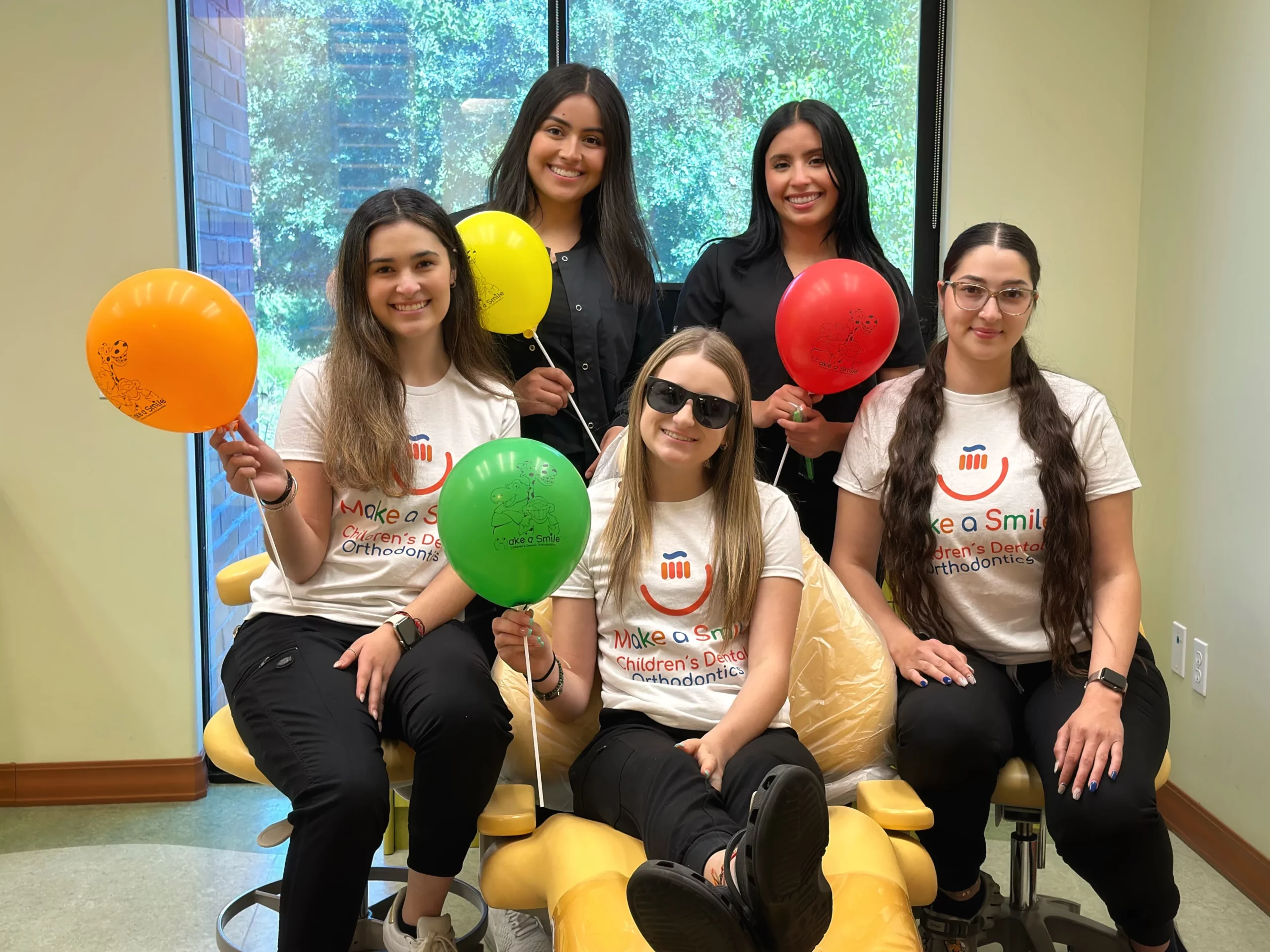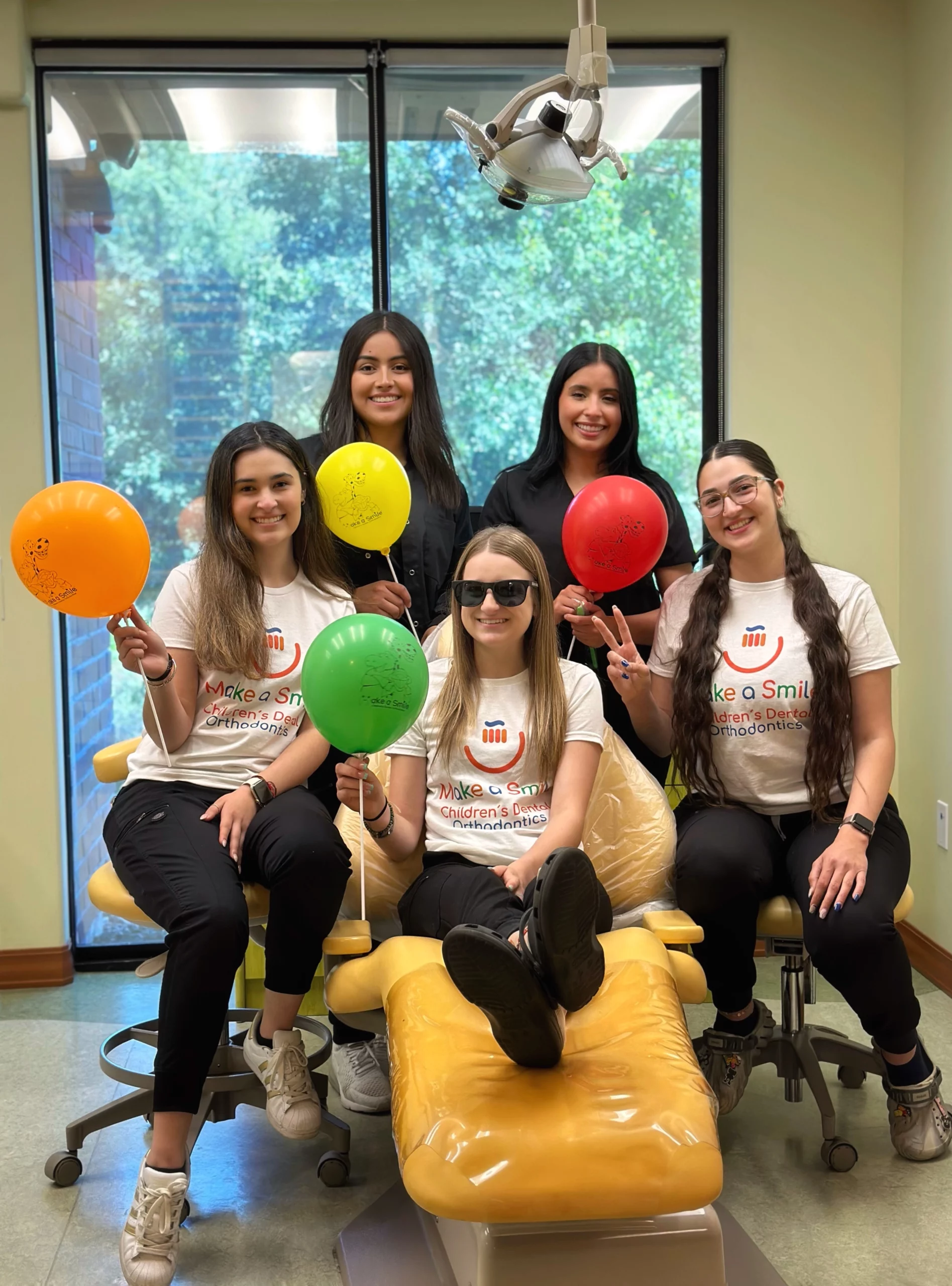Make a Smile
Orthodontics
We Brace, You Shine!
More reasons to Smile!
Make a Smile Orthodontics
MAKE A SMILE ORTHODONTICS
Welcome to Make A Smile Dental! Our mission is to provide the highest quality orthodontic care in a friendly, comfortable environment. Our skilled and compassionate orthodontic team is dedicated to helping you achieve a beautiful, healthy smile that you’re proud to show off. Utilizing the latest technologies and treatments, we aim to ensure you achieve the best possible results in the shortest possible timeframe.
ORTHODONTIC TREATMENTS
Our comprehensive range of services includes the most advanced orthodontic treatments available today. From traditional braces to cutting-edge invisible aligners, our mission is to provide effective treatment solutions tailored to your unique needs and lifestyle. Our services include:
Braces: Whether for minor adjustments or significant realignments, our braces are designed to address a wide range of orthodontic needs. They not only boost your child’s appearance but also enhance their oral function, leading to a healthier, more confident smile.
Invisalign: Recognizing that some children may desire a less visible treatment option, we offer our advanced Invisalign aligners. These virtually invisible aligners straighten your child’s teeth, restoring their smile and boosting their confidence.
Retainers: After the braces or Invisalign treatment, our customized retainers help maintain the perfect alignment of your child’s teeth. They ensure the long-term stability of the treatment results, keeping that beautiful smile intact.
At Make A Smile Dental, we’re not just about correcting teeth; our goal is to nurture trust and foster relationships that make every orthodontic visit a positive experience for your child. Together, we can guide the way to your child’s healthy, radiant smile. Get in touch with us today because there’s nothing we enjoy more than making your child smile!
WHAT SETS US APART!
What defines Make A Smile Dental is our team of orthodontists’ unwavering dedication to delivering personalized, affordable orthodontic solutions in a relaxed and welcoming atmosphere. Each of our orthodontists appreciates the individuality of every smile, shaping unique orthodontic treatment plans that suit your needs and those of your child. Our orthodontists are committed to walking you through every step of your orthodontic journey, answering all your questions , and explaining each stage in detail.

About Our Office
Your Home for Outstanding Orthodontic Care!
At Make a Smile Orthodontics, our mission is to provide extraordinary orthodontic care to you and your children. We’re passionate about guiding our patients – from youngsters to young adults – through their journey to perfect teeth alignment and dental health. This journey starts in our vibrant and interactive office environment, specially designed to make orthodontics fun and exciting for kids.
About Our Office

Your Home for Outstanding Orthodontic Care!
At Make a Smile Orthodontics, our mission is to provide extraordinary orthodontic care to you and your children. We’re passionate about guiding our patients – from youngsters to young adults – through their journey to perfect teeth alignment and dental health. This journey starts in our vibrant and interactive office environment, specially designed to make orthodontics fun and exciting for kids.
How can we help you?
Frequently Asked Questions
Orthodontics is a specialty field of dentistry that addresses the diagnosis, prevention, and correction of dental and facial irregularities, including malocclusion (bad bite). It primarily focuses on treating patients using braces, aligners, and other dental appliances to move teeth or adjust underlying bone.
The American Association of Orthodontists recommends that children should first see an orthodontist at the age of 7 or earlier if a problem is detected by parents, family dentist, or the child’s physician.
Orthodontics can treat a variety of dental and facial issues such as crowded teeth, gaps between teeth, overbite, underbite, crossbite, and other problems related to tooth alignment and jaw growth.
The duration of treatment depends on the severity of the case and can last anywhere between 6 months to 3 years. On average, standard treatments tend to last around 2 years.
Absolutely! Orthodontic treatment can be successful at any age, and adults especially appreciate the benefits of a beautiful and healthy smile.
The cost of orthodontic treatment varies based on the complexity of the case, the type of appliances used, and the length of treatment. It’s best to discuss these costs during your consultation.
Many dental insurance plans do cover orthodontic treatment, but coverage varies. You should review your specific insurance plan or speak with your insurance provider to understand what’s covered.
Remember, every patient’s orthodontic needs are different and the best way to find out more about your specific situation and potential treatment is to schedule a consultation with our orthodontist.

